10 Rare Salt Glaze Stoneware Pieces Worth Watching
Salt-glazed stoneware has long been admired for its durability and timeless beauty. Its smooth, glossy finish and unique cobalt blue decorations make each piece stand out as a testament to the skill of its maker. Over the years, these pieces have evolved from everyday kitchenware to prized collectibles, with certain examples becoming quite valuable. The history behind each item, combined with the artistry involved, gives salt-glazed stoneware a special appeal. Collectors are increasingly drawn to these rare pieces, eager to add a bit of history and craftsmanship to their collections.
This post may contain affiliate links, which helps keep this content free. Please read our disclosure for more info.
Westerwald Salt‑Glazed Jug

This 18th-century German salt-glazed jug originates from the Westerwald region, known for its distinctive grey stoneware and elaborate cobalt decorations. The jug is adorned with intricate floral motifs and sometimes bears a maker’s mark, which helps determine its origin.
The salt glaze finish was achieved by placing salt into the kiln, causing the surface to become smooth and glossy. Due to its age and decoration, these jugs are particularly valued by collectors of German pottery. In good condition, similar pieces are valued between $2,000 – $3,500, making them a solid investment for enthusiasts of antique ceramics.
American Salt‑Glazed Crock
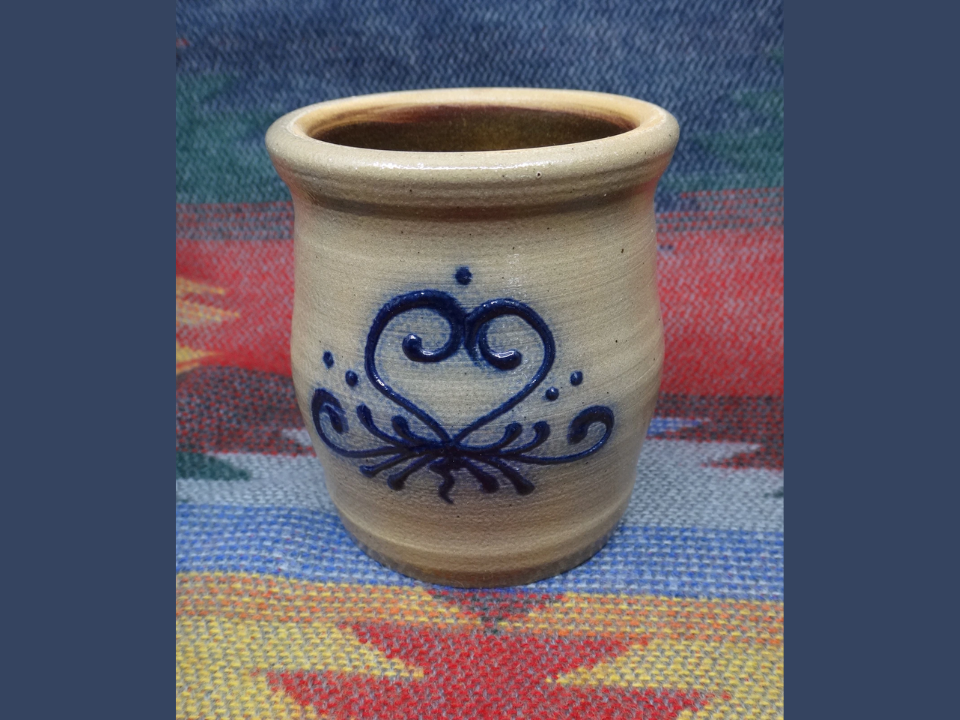
This American salt-glazed crock, typical of mid-19th-century pottery, is often adorned with vibrant cobalt blue hand-painted designs. These crocks were practical for storage purposes and were made with heavy-duty materials to withstand everyday use.
Salt glaze on American stoneware became highly sought after due to its durability and ease of maintenance. The cobalt decoration, often inspired by nature, added a touch of beauty to otherwise utilitarian pieces. These crocks are currently valued between $200 – $1,250 depending on their size and the intricacy of the design.
German Bartmann or Bellarmine Jug
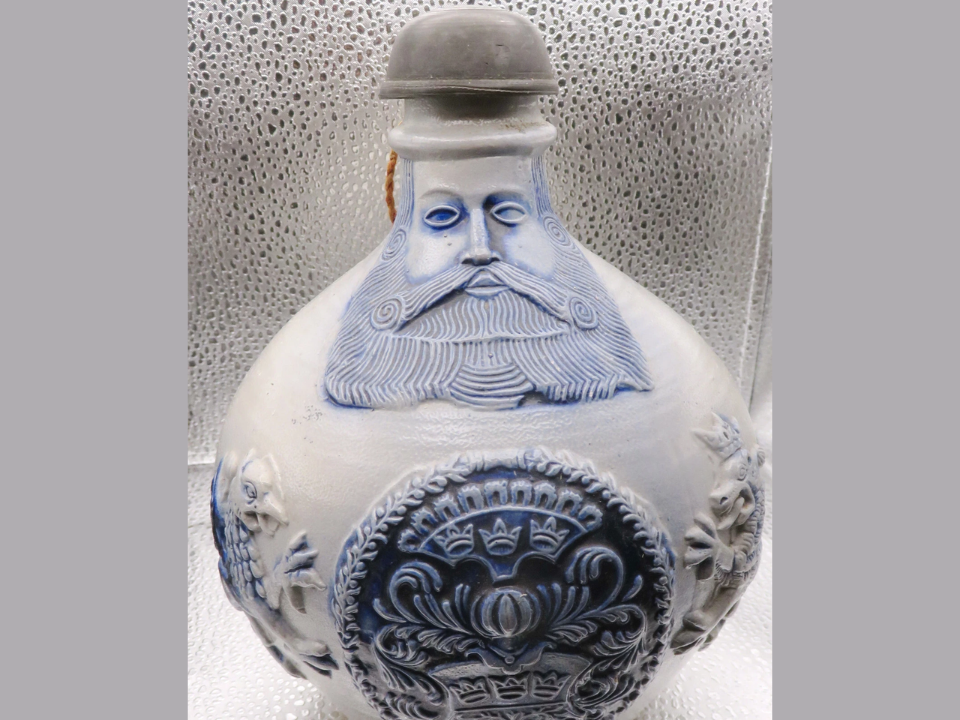
The Bartmann or Bellarmine jug is a distinctive piece of German stoneware that dates back to the 16th and 17th centuries. Recognizable by its bearded face on the neck and large capacity, this jug was commonly used to hold wine or beer and was often a decorative element in homes. A well-preserved example recently sold for a substantial amount, though exact sale prices vary based on condition and markings.
These jugs are deeply tied to the Rhineland region’s ceramic tradition and were exported across Europe. Because of their age, artistic design, and historical significance, these jugs are highly coveted by collectors, with market values often ranging in $1,000 for examples in top condition.
American Two‑Gallon Jug with Cobalt Bird Decor
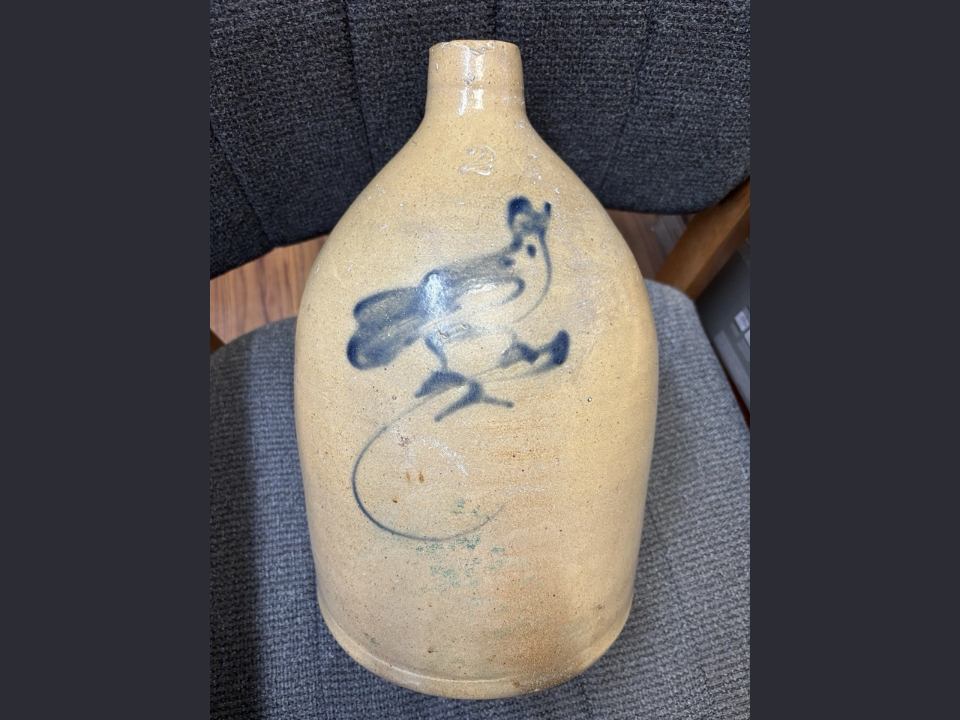
This two-gallon jug from the mid-19th century stands out due to its hand-painted cobalt bird design, often seen on pottery from New York and Pennsylvania. The jug’s large size and striking decoration made it a piece that combined both form and function.
The bird motif is a typical feature in American salt-glazed stoneware, with artisans often using freehand cobalt painting to add personality to their pieces. These jugs are often considered valuable due to their combination of folk art elements and historical appeal, with prices generally ranging from $500 – $800 depending on the size and the clarity of the artwork.
Large Butter Churn Crock

Large butter churns made from salt-glazed stoneware are a key part of early American household history. A 5-gallon churn, standing at approximately 17.5 inches tall, made in the early 20th century, was sold at auction for an astonishing $62,000 due to its size, age, and unique decoration. While such prices are not typical, they demonstrate the high value large, decorated churns can command.
These pieces were often used for practical purposes in the 19th and early 20th centuries, especially for producing butter in rural America. Now, they are considered collector’s items, with most large churns selling between $1,000 – $10,000 based on condition and craftsmanship.
Westerwald White Salt‑Glaze Jug
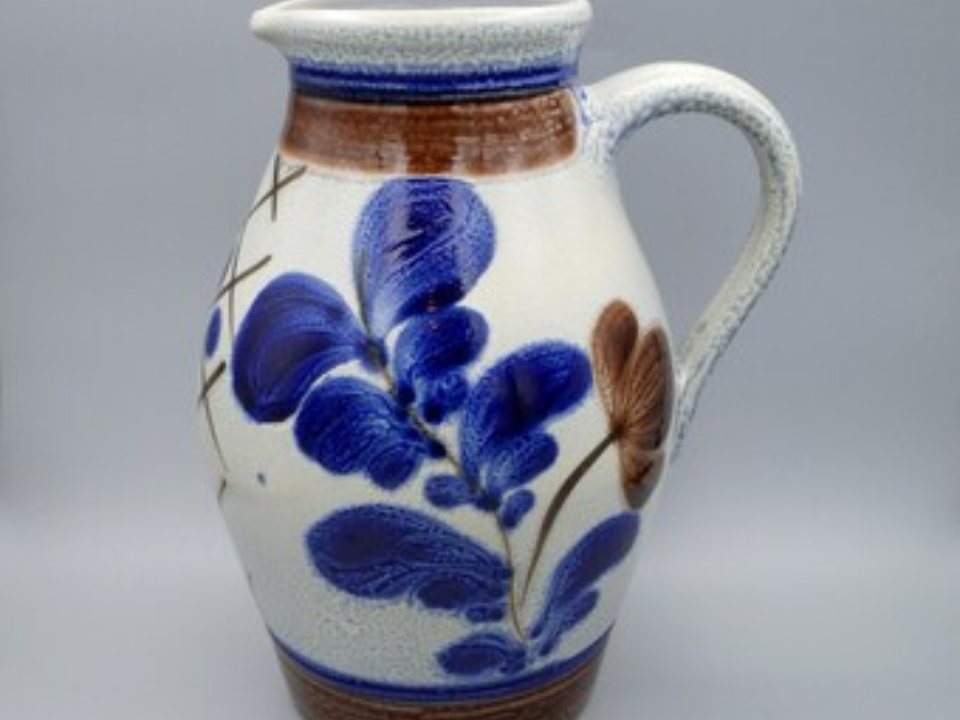
A rare example of a Westerwald white salt-glazed jug, dating back to 1656, demonstrates the skill of German potters during the 17th century. This jug was decorated with heraldic symbols and an applied medallion, giving it both artistic and historical value.
The jug’s age, coupled with the artistic decorations, makes it a significant example of early European pottery. For similar jugs, market values can range from $2,000 – $4,000, especially for those that can be definitively dated and come with original maker’s marks or provenance.
European Salt‑Glazed Stoneware Beer Bottle
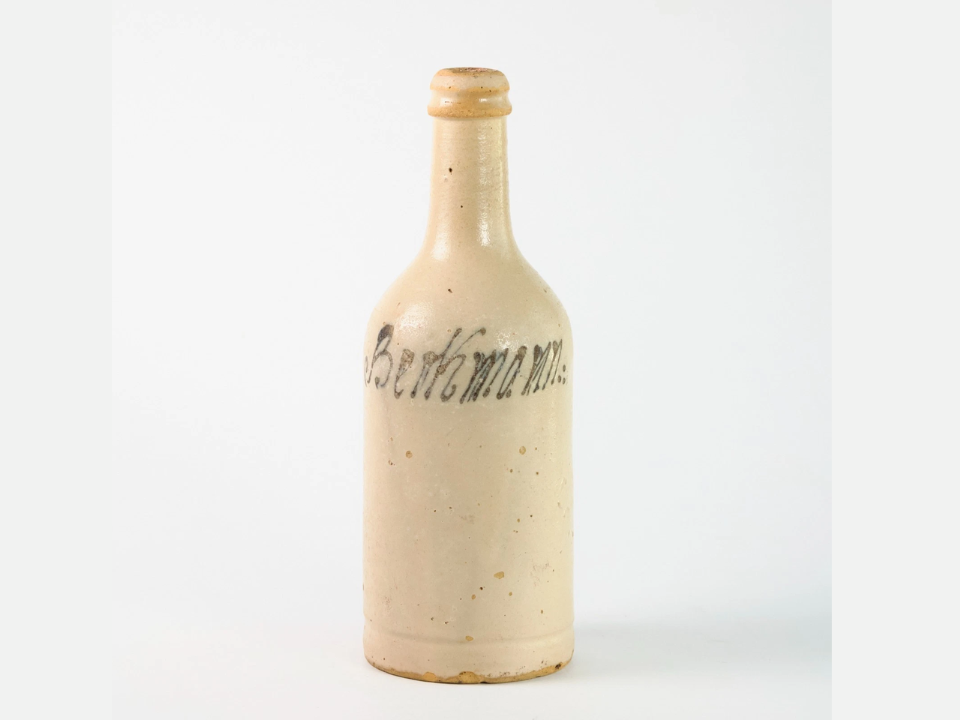
European salt-glazed beer bottles, like those produced in Germany, were once everyday items in European households. These utilitarian vessels, often simple in design but durable, are now collected for their historical significance.
Despite being functional in their time, these bottles are now prized for their cultural relevance and the craftsmanship that went into creating them. Most examples range from $40 – $100, with certain marked or decorated pieces fetching higher prices.
Pennsylvania Dutch Salt‑Glazed Stoneware Jug
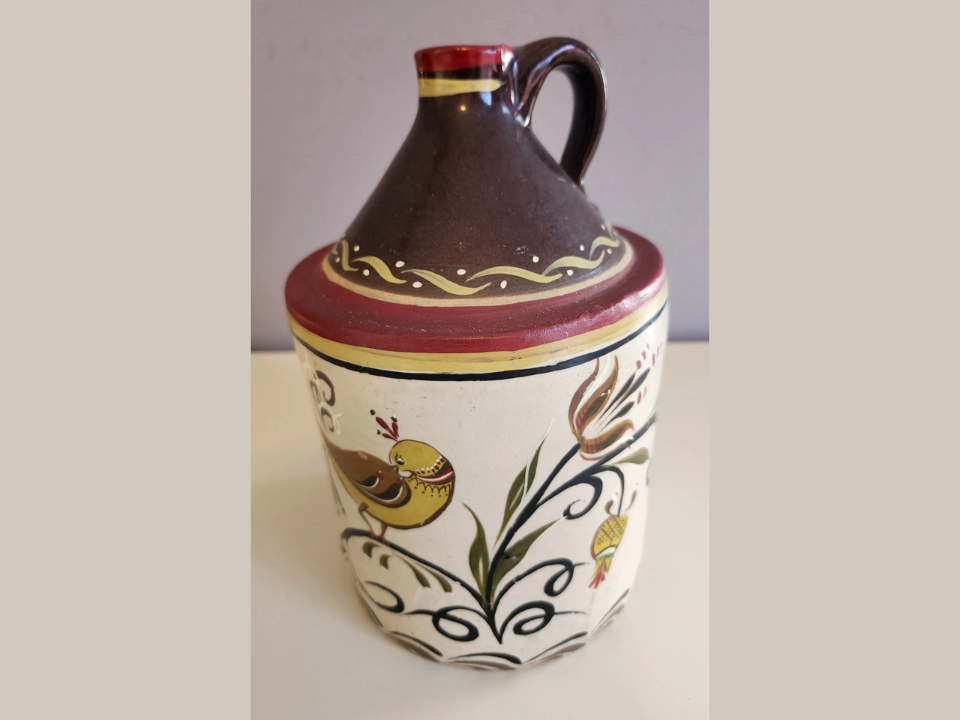
The Pennsylvania Dutch are known for their distinctive salt-glazed stoneware, often featuring geometric patterns and animal motifs. This jug, from the 19th century, is a prime example of the craftsmanship of Pennsylvania potters, decorated with bold cobalt flowers and a simple yet elegant design.
The jug’s appeal lies in its historical significance as a utilitarian piece made with high-quality craftsmanship. Pennsylvania Dutch pieces remain highly collectible, with prices generally ranging from $700 – $1,500 depending on condition and the complexity of the decoration.
Cobalt‑Decorated Salt‑Glazed Stoneware Pitcher
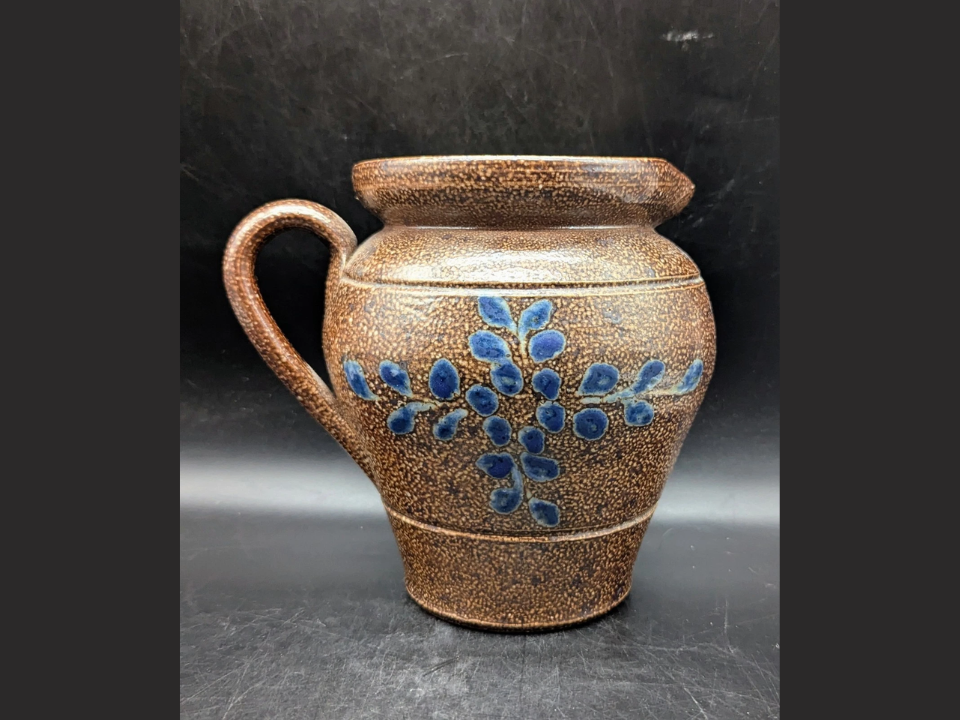
This charming pitcher, crafted in New England, features a delicate floral motif in cobalt blue and is an excellent example of American salt-glaze stoneware from the 19th century.
Such pitchers were commonly used for both functional and decorative purposes and were popular in American homes. Market values for these pieces vary, typically ranging from $350 – $600, with some rare pieces or those with exceptional provenance fetching higher prices.
English Salt‑Glazed Stoneware Tankard

This English tankard from the 18th century is a testament to the early salt-glazing techniques employed by potters. It features a simple yet elegant design with a slightly curved body and a sturdy handle.
English tankards, especially those from the 1700s, are prized for their craftsmanship and historical importance in the development of English ceramics. These pieces typically sell for $800 – $1,200, though rarer forms or marked examples can exceed that range.
This article originally appeared on Avocadu.
